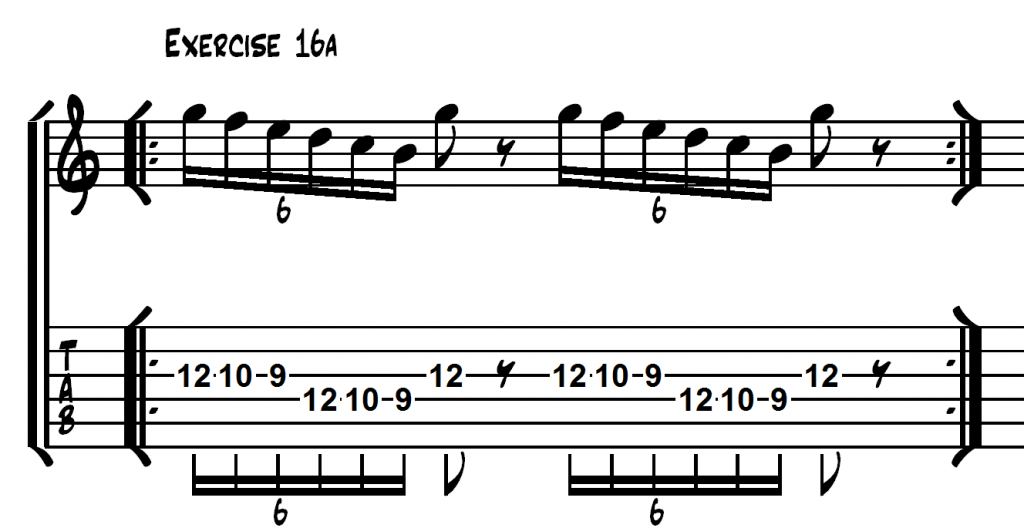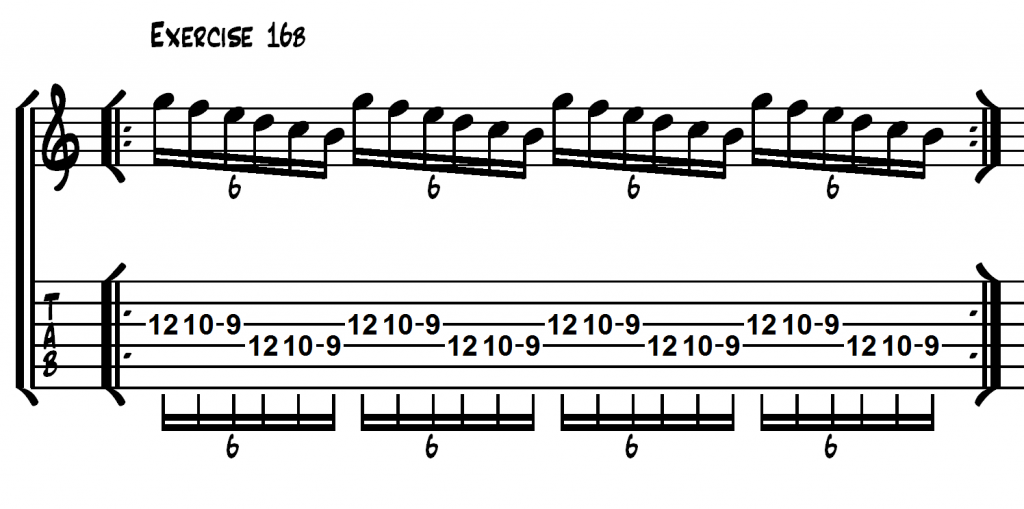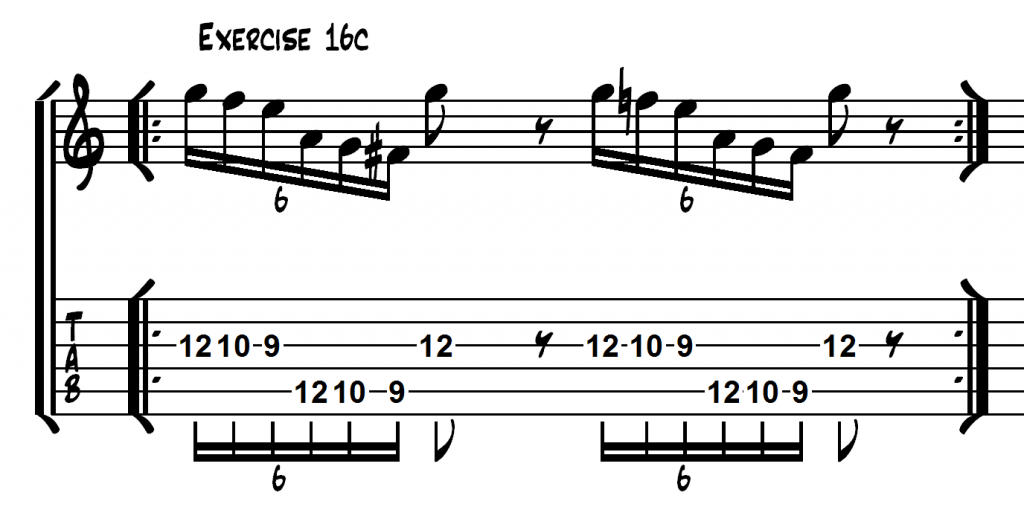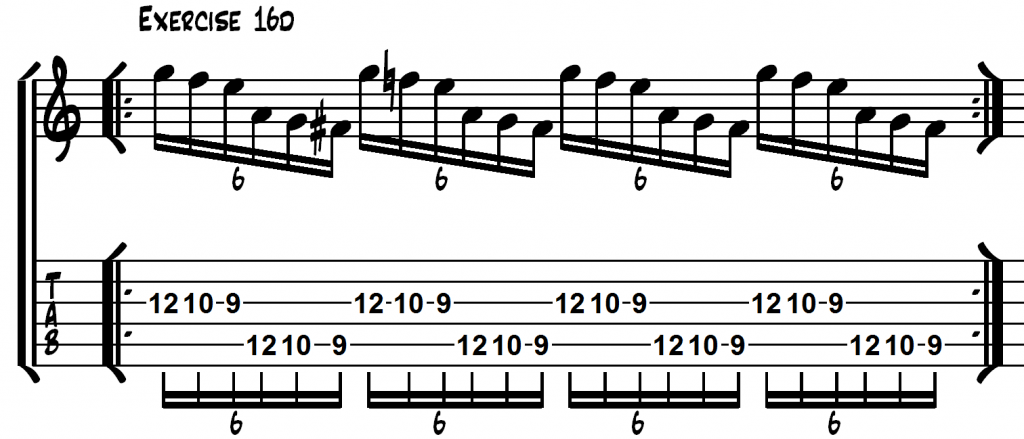How to Play 16th Note Triplet Patterns on Guitar
An important part of modern rock guitar playing revolves around lines of aggressive 1/16th-note triplets. Personally, I’m more comfortable playing these in a legato style; however, the ‘shrapnel’ 1/16th-note triplets of players like Paul Gilbert and Nuno Bettencourt are an important skill to have at your disposal.
Again, the main obstacle to playing these triplets well is rhythm. Picking is certainly an easier approach rhythmically, but can limit speed. Legato is much easier in terms of speed, but playing an even triplet is much more difficult.
To be sure of even finger control throughout the exercise, we will take the rotation approach that we learned in example 3. Study the following:

Pick through this exercise slowly. Use fingers 4, 2 and 1. Set the metronome to 70bpm and play 3 notes per beat (half the written speed of the above exercise). Try to accent each note occurring on the 12th fret.
When you can complete exercise 16a accurately, try playing the loop twice through before stopping. Increase this to 3 repeats, and then finally loop it as in example 16b.

Begin to speed up exercise 16b by setting your metronome to 35bpm and playing the exercise as the notated 1/16th-note triplets, i.e, 6 notes per click. As you get comfortable, increase the metronome by increments of 4bpm.
Most people find that their technique or rhythm soon starts to break down. When this happens go back to exercise 16a and play through the loop, pausing as you get back to the beat. In other words, play all 6 notes of the cycle, and pause when you land on the 1st note again. Don’t worry yet about evenly spacing your notes, just try to cram in all 6 notes and land on the 1st again.
The trick we use now is to add in an obstacle, in this case a string-skip:

Either keep the tempo the same or slightly increase it by 8bpm, and then try to get around the loop. Forget about rhythm, and just try to complete the cycle to land on the 1st note again. Your picking should remain the same.
Then try two loops before pausing.
Finally, reduce your metronome speed to the tempo where you originally got stuck and play this:

Don’t worry too much about even note spacing, just concentrate on getting back to the first note on the click.
This will feel weak and out of time; however, when you go back to playing exercise 16b and play your original loop, you will find it much easier to play at the speed where you initially got stuck.
This is the time to focus on rhythm and accuracy.
All these ideas are taken from my book Complete Technique for Modern Guitar.
“The artists you work with, and the quality of your work speaks for itself.”
Tommy Emmanuel
© Copyright Fundamental Changes Ltd 2025
No.6 The Pound, Ampney Crucis, England, GL7 5SA
